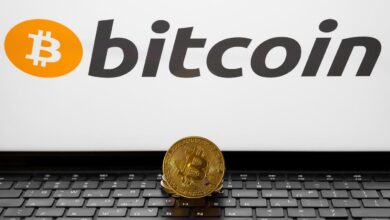When Values And Expectations Collide: Moral Incongruence In Workplaces

📝 usncan Note: When Values And Expectations Collide: Moral Incongruence In Workplaces
Disclaimer: This content has been prepared based on currently trending topics to increase your awareness.
Post by Dr Niranjan Janardhanan, Assistant Professor of Management in the Department of Management at the London School of Economics and Political Science.
Moral incongruence can erode trust, foster disengagement, and even encourage unethical behavior within organizations.
getty
In the modern workplace, employees are often asked to navigate a delicate balance between professional expectations and their personal values. But what happens when those expectations directly conflict with an individual’s moral compass? Would we, like Tony Menendez, an accountant who blew the whistle on fraudulent accounting at Halliburton, call out practices that conflicted with our personal morals against what is expected of us professionally?
A paper I recently published alongside my co-authors in Human Resource Management Review explores this very dilemma, introducing the concept of moral incongruence—a psychological tension that arises when employees are expected to act in ways that contradict their ethical beliefs.
Our research offers a framework for understanding how these conflicts manifest and how employees might respond. Accordingly, I propose that organizations can do a moral sanity check on their internal processes to prevent the fallout. At its core, moral incongruence is not just a personal struggle—it’s a systemic issue that can erode trust, foster disengagement, and even encourage unethical behavior within organizations.
Understanding the Framework
To explain how moral incongruence unfolds, we had to draw on two well-established psychological theories, deonance theory and socio-cognitive theory.
Deonance theory focuses on the emotional response—particularly moral outrage—that individuals experience when they perceive ethical violations. This outrage can lead to resistance, whistleblowing, or other forms of protest.
Socio-cognitive theory explains how people cope with ethical conflicts by engaging in moral disengagement. This involves rationalizing or justifying unethical behavior to reduce internal discomfort, thus encouraging their continued engagement in the unethical behavior. Together, these theories provide a nuanced understanding of how employees react when their roles demand actions that clash with their values.
Overall, we identified three primary behavioral outcomes of moral incongruence. Some, like Tony Menendez, choose to speak out, engaging in what the researchers call prohibitive voice. Others may withdraw—emotionally, psychologically, or even physically—from their roles. And in some cases, employees comply with unethical demands, engaging in behavior that contradicts their own moral standards at least in the short run, eventually burning out. While we hear of employees speaking up or blowing the whistle—indeed at times dramatically dominating news headlines when they do—withdrawal or continued engagement in unethical behaviors more often go unnoticed.
What Drives These Responses?
Not all employees respond to moral incongruence in the same way. Several factors influence how an individual will process and act on these conflicts. For instance, those with a strong moral identity—a clear sense of themselves as ethical individuals—are more likely to experience intense moral outrage and resist unethical expectations. Conversely, individuals driven by self-interest may suppress their ethical concerns to protect their status or income.
The moral intensity of the situation also plays a role. If the ethical breach is perceived as serious or harmful, the emotional response is likely to be stronger. Meanwhile, the broader organizational climate can either exacerbate or mitigate these effects. In environments where unethical behavior is normalized, employees may feel pressured to conform. On the other hand, ethical leadership can serve as a protective factor, encouraging employees to uphold their values.
Another key factor is organizational identification—the degree to which employees feel connected to their company. Those who strongly identify with their organization may ironically be more likely to disengage rather than resist, choosing to protect their sense of belonging rather than challenge the status quo. Such employees are likely to engage in unethical pro-organizational behaviors, as their loyalty to the organization can supersede their moral values.
Countering Moral Incongruence
Our model carries important implications for business leaders, HR professionals, and organizational designers across industries. Moral incongruence is a real danger that can undermine employee morale, damage reputation, and lead to costly ethical breaches. Organizations must take proactive steps to align role expectations with ethical standards.
Ethical leadership and psychological safety go hand in hand in ensuring employees are able to speak up against unethical practices. Leaders must model integrity in their decisions and interactions, creating a culture where ethical behavior is not just encouraged but expected. They should foster open dialogue, protect whistle blowers, and ensure that ethical concerns are taken seriously. Supporting employee voice is essential. Organizations should provide psychologically safe, confidential channels for reporting ethical concerns and ensure that retaliation is not tolerated. Recognizing and rewarding ethical courage can further reinforce a culture of integrity.
The Moral Sanity Check
I recommend that managers engage in a moral sanity check on processes in their work units to detect and prevent moral incongruence. Sanity checks are basic audits or tests done to rule out obvious but major problems that could stem from a new process. Typically used in manufacturing and software development, sanity checks help to ensure that new processes or process changes do not violate fundamental objectives and specifications. Moral sanity checks involve checking processes to ensure that they do not violate moral values or specifications established a-priori based on the organizations’ core values.
Moral sanity checks can be done when new processes, roles, or projects are initiated, or when changes are made to existing processes, or at random. Will the new process lead to scenarios of moral incongruence? Are values associated with the old process being undermined by the change? Would being effective in this process require employees to compromise on their values? Will the new process lead to moral dilemmas, and if so, how are employees more likely to act?
Worst case or extreme scenarios must be considered, with guidelines about priorities in such scenarios clearly established. When employees understand the boundaries of acceptable conduct, they are less likely to feel conflicted or coerced. These scenarios can then be made a part of assessment centers when recruiting for these roles. Onboarding should include training on decision-making amidst these dilemmas, preparing employees to navigate complex situations with confidence.
In an era where transparency and accountability are more important than ever, organizations cannot ignore the risks of moral incongruence. When employees are forced to choose between their values and succeeding in their roles, consequences can be far-reaching. While Tony Menendez battled his employer for almost nine years, including lengthy legal challenges, to prove his position, others may be inclined to turn a blind eye to unethical practices. By engaging in regular moral sanity checks, encouraging ethical leadership, and providing psychological safety for employees to speak up, organizations can turn potential conflicts into opportunities for growth and resilience. In the long run, doing the right thing is not just good for people—it’s good for business.
Follow LSE’s Department of Management on LinkedIn. Check out our website.




